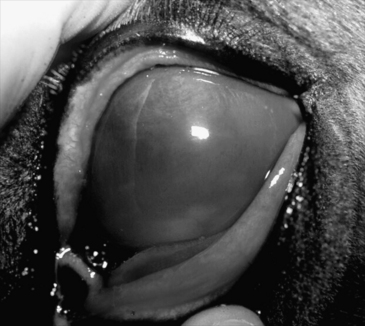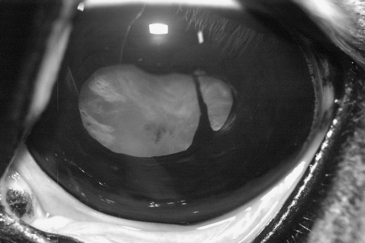CHAPTER 138 Equine Recurrent Uveitis
Equine recurrent uveitis (ERU), also known as moon blindness, iridocyclitis, and periodic ophthalmia, is a syndrome that is the most common cause of blindness in horses and may have a prevalence rate in the United States of 2% or greater. The disease is characterized by episodes of intraocular inflammation followed by variable periods of lack of inflammation or quiescence. In many horses, the bouts of inflammation continue until blindness results. Fortunately, recent advances in the treatment of horses with ERU have led to successful management of this disease. This chapter discusses some important facts about ERU and treatment options.
CLINICAL SIGNS
Typical clinical signs of active ERU include photophobia, blepharospasm, corneal edema, aqueous flare, hypopyon, miosis, vitreous haze, and chorioretinitis (Figure 138-1). Clinical signs of chronic ERU include corneal edema, iris fibrosis and hyperpigmentation, posterior synechia, corpora nigra degeneration (smooth edges), miosis, cataract formation, vitreous degeneration and discoloration, and peripapillary retinal degeneration (Figure 138-2).





